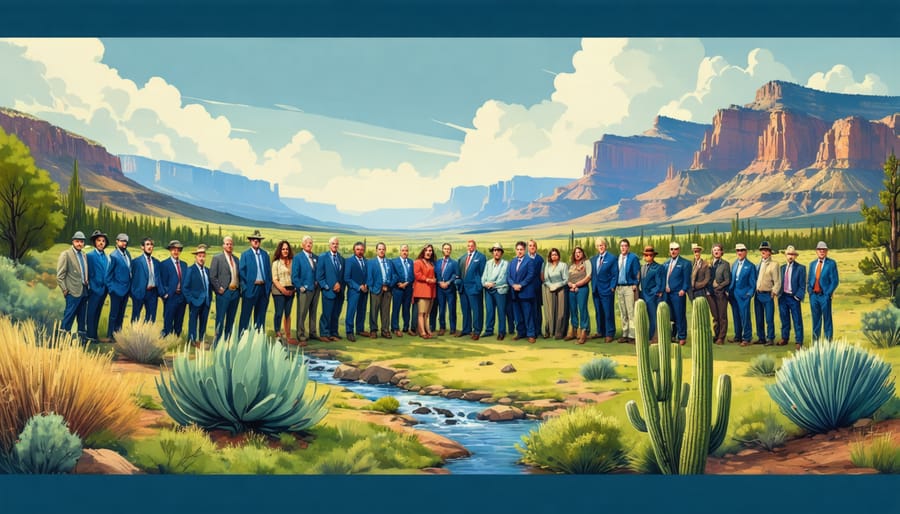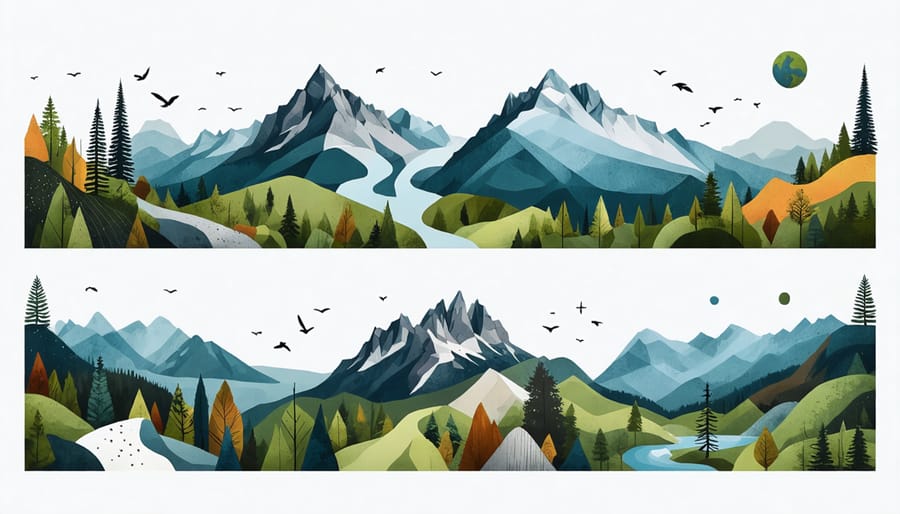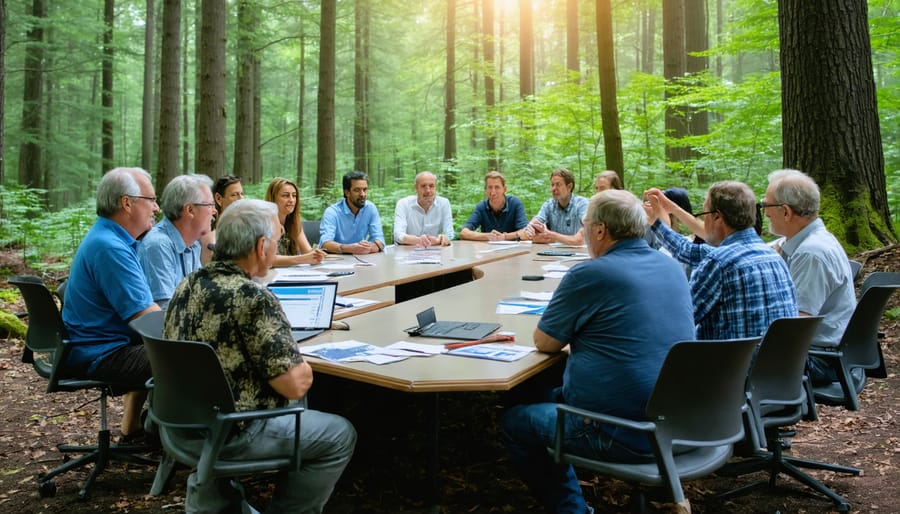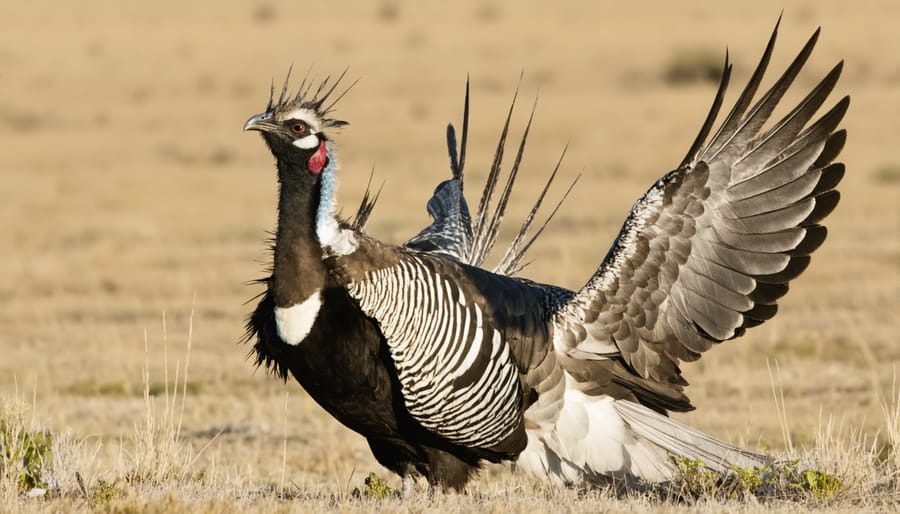
Uniting diverse stakeholders in the American West, the Western Collaborative Conservation Network (WCCN) forges partnerships to protect the region’s precious landscapes and resources. By bringing together landowners, agencies, nonprofits, and communities, WCCN amplifies on-the-ground conservation efforts across boundaries.
From restoring sagebrush habitats to improving watershed health, WCCN initiatives demonstrate the power of collaboration in tackling complex environmental challenges. These cooperative projects not only enhance biodiversity and ecological resilience but also support local economies and cultural heritage.
As pressures on western lands intensify, WCCN’s inclusive, solutions-oriented approach has never been more vital. By joining forces around shared conservation goals, network partners are shaping a future where both nature and people can thrive. Through its growing alliance and pioneering spirit, WCCN is redefining what’s possible when committed individuals work together to steward the western landscapes we all depend on.

The Challenges Facing Western Ecosystems
Habitat Fragmentation
Habitat fragmentation poses a significant threat to western species and ecosystems. As human activities like urban development, agriculture, and resource extraction divide once-contiguous habitats into smaller, isolated patches, wildlife populations become increasingly vulnerable. Fragmentation restricts animal movement, limits gene flow, and reduces access to essential resources, leading to declining biodiversity and increased risk of local extinctions. Many iconic western species, such as grizzly bears, wolves, and sage grouse, require vast, connected landscapes to thrive. Fragmented ecosystems also become more susceptible to invasive species, disease outbreaks, and the impacts of climate change. To protect the rich biodiversity of the American West, the Western Collaborative Conservation Network works to maintain and restore habitat connectivity through innovative partnerships, strategic land conservation, and science-based planning. By addressing habitat fragmentation at a landscape scale, the WCCN aims to ensure the long-term resilience of western ecosystems and the diverse wildlife they support.
Invasive Species
Invasive species pose a serious threat to native ecosystems, disrupting the delicate balance of biodiversity. These non-native plants, animals, and microorganisms can quickly spread and outcompete indigenous species for resources, leading to population declines and even local extinctions. Invasive species often lack natural predators in their new environments, allowing them to proliferate unchecked. They can alter habitats, disrupt food webs, and introduce diseases, causing cascading effects throughout the ecosystem. The Western Collaborative Conservation Network recognizes the urgent need to address this issue and works with partners to develop strategies for preventing the introduction and spread of invasive species. By raising awareness, conducting research, and implementing management plans, the WCCN aims to protect the integrity of western ecosystems and preserve the rich tapestry of native biodiversity for future generations.
Climate Change Impacts
Climate change is drastically altering western landscapes, posing significant challenges for conservation efforts. Rising temperatures and prolonged droughts have led to an increase in the frequency and intensity of wildfires, decimating vast swaths of forest and grassland ecosystems. These fires not only destroy habitats but also release large amounts of carbon dioxide into the atmosphere, further exacerbating the climate change impacts on the region.
Moreover, shifting weather patterns and earlier spring snowmelt are altering the timing of plant growth and animal migrations. Many species, such as migratory birds and butterflies, rely on precise synchronization with seasonal changes for breeding, feeding, and movement. As these patterns become increasingly unpredictable, wildlife struggles to adapt, leading to population declines and disruptions in ecological balance.
The Western Collaborative Conservation Network recognizes the urgent need to address these climate-driven challenges. By bringing together diverse stakeholders, the network aims to develop innovative strategies that build resilience in western ecosystems. Through collaborative research, adaptive management, and community engagement, the WCCN is working to protect and restore the unique landscapes that define the American West in the face of a changing climate.
How the WCCN Works
Collaborative Structure
The Western Collaborative Conservation Network (WCCN) is a unique alliance that brings together a wide range of stakeholders, including government agencies, non-profit organizations, private landowners, and local communities, to work towards common conservation goals across the western United States. By fostering open communication, trust, and shared values, the WCCN creates a platform for these diverse groups to collaborate effectively on pressing environmental issues.
Through regular meetings, workshops, and online forums, WCCN members exchange knowledge, resources, and best practices in collaborative conservation. This network facilitates the development of innovative, science-based solutions to complex challenges such as habitat fragmentation, invasive species management, and climate change adaptation. By leveraging the collective expertise and resources of its members, the WCCN is able to achieve conservation outcomes that would be difficult for any single organization to accomplish alone.
The WCCN’s collaborative structure also ensures that conservation efforts are inclusive and responsive to the needs and perspectives of local communities. By engaging stakeholders at all levels, from grassroots organizations to federal agencies, the network promotes a sense of shared ownership and responsibility for the health of western ecosystems.

Landscape-Scale Initiatives
The Western Collaborative Conservation Network is actively engaged in several ambitious landscape-scale conservation initiatives across the western United States. One notable project is the Greater Sage-Grouse Conservation effort, spanning 11 states and involving numerous partners working to protect and restore critical sagebrush habitat for this iconic bird species. The WCCN plays a vital role in coordinating research, monitoring, and on-the-ground conservation actions to ensure the long-term survival of the sage-grouse.
Another significant initiative is the Yellowstone to Yukon Conservation Corridor, a visionary project aiming to create a connected network of protected areas from Yellowstone National Park to the Yukon Territory in Canada. The WCCN collaborates with partners to identify and protect key wildlife corridors, promote sustainable land use practices, and engage local communities in conservation efforts.
The WCCN is also deeply involved in the Colorado River Basin Conservation Partnership, working to address the complex challenges facing this critical watershed that sustains millions of people and countless species across seven states. By fostering collaboration among diverse stakeholders, the WCCN helps develop innovative solutions for water management, habitat restoration, and climate change adaptation in the Colorado River Basin.
Success Stories

Sage Grouse Conservation
The Western Collaborative Conservation Network has played a crucial role in protecting sage grouse habitat across multiple western states. Through its partnership with various organizations, agencies, and landowners, the WCCN has facilitated the implementation of targeted conservation measures to preserve and restore critical sage grouse habitat. These efforts have included the removal of invasive species, such as cheatgrass, which can outcompete native vegetation and increase the risk of wildfires. Additionally, the WCCN has worked to improve grazing practices, ensuring that livestock management is compatible with sage grouse conservation goals. By collaborating with ranchers and providing technical assistance, the network has helped to maintain healthy rangelands that support both wildlife and sustainable livestock production. The WCCN has also been instrumental in securing funding for sage grouse conservation projects, leveraging the collective resources of its partners to maximize impact. Through its dedicated efforts, the Western Collaborative Conservation Network has demonstrated the power of collaboration in addressing complex conservation challenges and protecting vital sage grouse habitat across the western United States.
Watershed Restoration
One shining example of the power of collaboration in watershed restoration is the revival of Oregon’s Sandy River. In 2007, Portland General Electric, conservation groups, and government agencies joined forces to remove the Marmot Dam, which had blocked fish passage for nearly a century. This monumental effort opened up over 100 miles of habitat for endangered salmon and steelhead, allowing them to return to their ancestral spawning grounds.
The project’s success hinged on the diverse expertise and resources brought together by the collaboration. Biologists and hydrologists worked to ensure the dam’s removal would restore natural river flows and sediment transport. Engineers designed a plan to safely dismantle the massive concrete structure. Local volunteers and conservation organizations, passionate about habitat restoration, helped with revegetation efforts to stabilize the riverbanks and create new riparian zones.
Today, the Sandy River is a testament to nature’s resilience when given the chance to heal. Salmon and steelhead populations are rebounding, and the river’s ecological health continues to improve. This inspiring story demonstrates how collaboration across sectors can tackle even the most daunting conservation challenges and achieve remarkable results for our watersheds and the life they sustain.
Get Involved
The Western Collaborative Conservation Network offers numerous ways for individuals and organizations to support its crucial mission. Financial contributions, no matter the size, help fund research projects, on-the-ground conservation efforts, and educational initiatives. Volunteering is another valuable way to get involved, whether through participating in citizen science programs, assisting with habitat restoration, or lending your skills to outreach and fundraising efforts. Spreading awareness about the WCCN’s work and the importance of collaborative conservation is also vital. Share our stories, successes, and calls to action with your networks and encourage others to learn more and join the cause. By working together, we can amplify our impact and create a stronger, more sustainable future for the western United States’ natural heritage. Every action, from donating to volunteering to advocating, brings us one step closer to achieving our vision of thriving landscapes, resilient communities, and a culture of collaboration. Join us in this critical work and be part of the solution for western conservation.
Conclusion
The Western Collaborative Conservation Network’s efforts underscore the immense potential of collaborative conservation to safeguard and restore western ecosystems. By fostering partnerships, sharing knowledge, and implementing innovative strategies, the WCCN is paving the way for a more sustainable future. As environmental challenges continue to mount, the network’s approach offers a beacon of hope, demonstrating that by working together, we can tackle even the most complex issues facing our natural world.
The success stories emerging from the WCCN’s initiatives serve as a testament to the power of collaboration. From restoring critical habitats to protecting endangered species, these achievements highlight the tangible impact of the network’s work. As the WCCN continues to grow and evolve, it has the potential to reshape the landscape of conservation in the western United States, creating a lasting legacy of healthy, thriving ecosystems for generations to come.
jessica
Ava Singh is an environmental writer and marine sustainability advocate with a deep commitment to protecting the world's oceans and coastal communities. With a background in environmental policy and a passion for storytelling, Ava brings complex topics to life through clear, engaging content that educates and empowers readers. At the Marine Biodiversity & Sustainability Learning Center, Ava focuses on sharing impactful stories about community engagement, policy innovations, and conservation strategies. Her writing bridges the gap between science and the public, encouraging people to take part in preserving marine biodiversity. When she’s not writing, Ava collaborates with local initiatives to promote eco-conscious living and sustainable development, ensuring her work makes a difference both on the page and in the real world.
